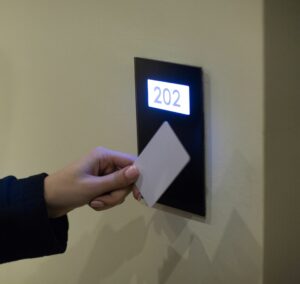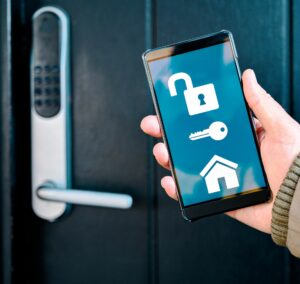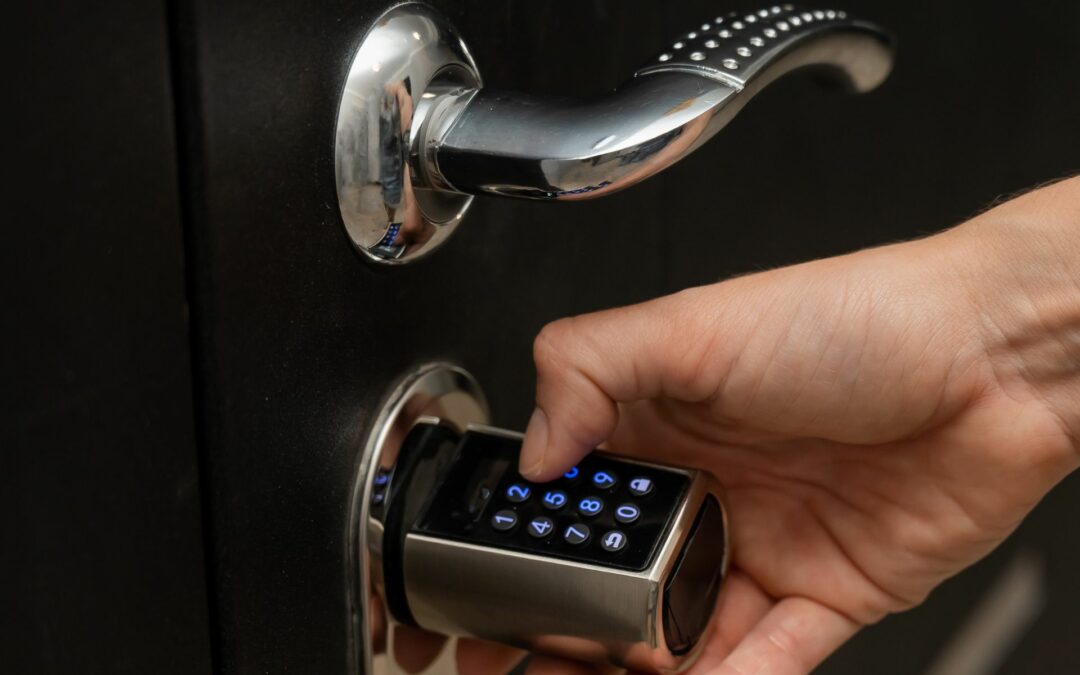Keyless entry systems have revolutionized access and security. You can say goodbye to the days of fumbling for or losing keys. The days of worrying about someone stealing and copying your key without your permission are long over. With keyless entry systems, intruders will have more difficulty breaking into your place of work. But how did technology advance to the point where we got this incredible innovation? Read this blog to learn more about the history of this advancement in security technology.
A Brief History Of Keyless Entry Systems
To understand how we got the keyless entry systems we use today, we must go back in time to their introduction. After reading this blog, you will be well-acquainted with this small slice of history.
Combination Locks: Early Keyless Entry
Technically speaking, the earliest version of a keyless entry system came in the form of combination locks that debuted in banks. They were invented in 1873 by James Sargent, who later also introduced the time-delay lock in 1880, which also used a combination. It also included a mechanical timer to count down the time to access whatever is being secured.
Enter The Keycard
The next stage in the evolution of keyless entry systems debuted in 1975, a little over a century after Sargent’s combination locks. This next stage of keyless entry took the form of a keycard with a magnetic strip, or the VingCard system, created by Tom Sorens. This version of keyless entry is now most commonly used in the hospitality industry. Recent versions have even improved upon the keycard by embedding it with RFID instead of a magnetic strip, reducing the risk of demagnetization.

Biometrics And Smart Locks
Today, keyless entry systems come in a variety of forms. High-security locks that utilize keypads are one notable example, especially among safes. There are also biometric and smart locks on the market. Biometric locks scan a specific physical trait to verify someone’s identity before authorizing access. Smart locks are usually connected to a phone app through WiFi or Bluetooth. Today, the majority of commercial properties and residential complexes use smart lock systems for their security.

The Benefits & Drawbacks Of Keyless Entry Systems
One obvious benefit of keyless entry systems is the ease of use and convenience of not having to worry about a key. The next major benefit of keyless entry is the increased security. Hacking a phone, guessing a PIN, or even trying to imitate someone’s physical traits requires more steps than using a stolen key or making an illegal copy of a traditional key. The most advanced forms of keyless entry can also monitor who accesses a place throughout the day.
As far as drawbacks are concerned, the main one is that a lot of keyless entry systems are expensive. In fact, they can cost $3,000-$7,000 to install. Additionally, some of them also rely on a WiFi or Bluetooth connection to work, so there might be issues if there’s a power outage, so you should have a contingency plan in case this happens.
Learn More About Keyless Entry Systems With ASAP Locksmith!
We hope that you found this brief history of keyless entry systems to be fascinating and informative. Now that you’re also aware of the benefits and drawbacks of keyless entry systems, you might be interested in determining if there’s one that can effectively meet the security needs of your property. If you live in the Denver area, you’re in luck. Our team at ASAP Locksmith of Colorado will help you find the right security system to keep you safe 24/7. Just contact us today to bring your security to new heights.

